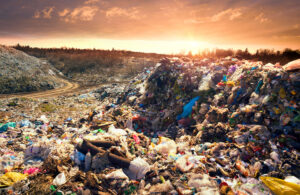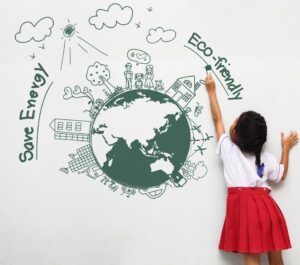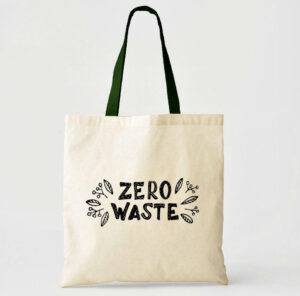So, I was looking up some numbers concerning the fashion industry, in particular its current value and future projections. As per a study (by Kantar) released early in 2020, in terms of clothing the global market should increase by 3.9% each year until 2025, garnering a total of 64 billion dollars in 5 years. Globally, the worldwide fashion retail market is valued at 300 billion dollars in 2020. This amount could reach 360 billion dollars in 2025. (The pandemic may shift the projected numbers, but that should prove to be marginal in the long term.)
That’s not the point though. The point is that approximately half of this growth will be generated by fast-fashion brands.
There is a cost to fashion and it’s not just the money we are talking about. For years, fashion’s polluting aspects stayed below the radar of public knowledge or conscience. Maybe because people didn’t really splurge all that much on clothes? The more likely reason, though, is that fast fashion wasn’t really a thing back then – we are talking pre-1990s here.
Let’s go slow on fast fashion
 The ‘fast’ in fast fashion means that the trend of the moment has to reach customers fast”really fast. Which means quick turnarounds. A whole lot of quick turnarounds throughout the year is a whole lot of garments out there. We are talking of mass-produced, relatively cheap garments that the brands want people to wear for short periods and discard at the earliest, so that the wheel of fast fashion keeps moving at a relentless speed. The consequences are steep, it goes without saying.
The ‘fast’ in fast fashion means that the trend of the moment has to reach customers fast”really fast. Which means quick turnarounds. A whole lot of quick turnarounds throughout the year is a whole lot of garments out there. We are talking of mass-produced, relatively cheap garments that the brands want people to wear for short periods and discard at the earliest, so that the wheel of fast fashion keeps moving at a relentless speed. The consequences are steep, it goes without saying.
a) Energy
From crop to fabric is an energy-intensive process in itself, not counting the energy footprint of packaging and shipping of the fabric and finished product. It takes agricultural energy to produce natural fibres and mining or processing for synthetic fabrics. Fuels are used in machinery for ploughing and harvesting, while electricity is the most common power source for factory machinery.
b) Land/Natural resources
Natural fibres require large areas for production and synthetic ones typically require petrochemicals.
c) Water
Nearly all fabrics require water use during production, with cotton requiring the most (it takes on average 10,000 litres of water to cultivate just one kilogram of raw cotton). Conventional textile dyeing and finishing processes also demand a lot of water. It is estimated that processing (including spinning, dyeing, finishing) a kilogram of fibre (not just cotton, but also polyester and other materials) requires 100 to 150 litres of water.
d) Toxic chemicals
According to various reports, more than 8,000 chemicals are used throughout the textile-making process, from pesticides in growing cotton and other fibres, to bleaching and dyeing yarns, to washing fabrics, to printing patterns.
Take polyester as example – it is derived from fossil fuels and it also has microplastics (very small pieces of plastic that never biodegrade) which, when we wash it, shed into the water, which in turn goes into the water streams and ultimately into the oceans. In fact, the textiles industry has been identified as a major contributor to plastic entering the ocean, which is a serious concern because of the associated negative environmental and health implications (studies indicate that the plastic fibres in our clothes could be poisoning our food chain on a massive scale).
The fashion industry contributes to around 10 per cent of global greenhouse gas emissions due to its long supply chains and energy-intensive production.

The speed at which garments are produced also means that more and more clothes are being used and disposed of by consumers, creating a huge amount of textile waste. It is estimated that more than half of the fast fashion produced is disposed of in under a year. As per studies, any given piece of clothing will be worn just 7 to 10 times before getting tossed. Unfortunately, most of the worn clothing ends up in landfills.
Worse, before reaching the landfill, that polyester dress has already done much damage by releasing microplastics into the environment. A 2017 report from the International Union for Conservation of Nature (IUCN) estimated that 35% of all microplastics in the ocean came from the laundering of synthetic textiles like polyester. So, if you thought plastic in the ocean was only from plastic bottles and plastic packets, it’s time to get that jolt and recalibrate your priorities and preferences.
You wear what you are
The good thing is, it does feel better to be doing (wearing, in this case) better. Several studies have, in fact, shown that an increasing number of millennials are conscious about who is making their clothes and they expect their brands to be a responsible lot. They like to wear their statements on their sleeve and in this case, it is all literal. There is a growing passion for social and environmental causes, and brands know it.
Our choices can drive what is best-selling and, so, let’s make clear our choices. While there’s as yet nothing that won’t have some kind of an environment-related fallout, as consumers we can use our power to choose with discretion and responsibility.
Think for yourself: Is the strain on our (by now) very limited resources justified because we want our fashion fast? Can we convey to retailers and brands our preferences by shifting loyalties to their ‘sustainably produced’ collections, or better still by patronising brands that are wholly sustainable/organic/ethical/responsible/transparent? Of course that still does not mean we should go on a guilt-free shopping binge, but if we must, may we not do that as responsible consumers?
A checklist for conscious consumers
- Choose organic fibres and natural fibres that do not require chemicals to be produced.
- Choose fibres with low water consumption such as linen and recycled fibres.
- Shirk synthetic materials like polyester, rayon and nylon. The chemicals that go into every stage of production and manufacture are still very much present when we wear them.
- Clothes made from natural, sustainable, ecofriendly and handwoven textiles are comfortable, breathable, and durable. Period.
- Make a little effort to know where your clothes are being made and if they are being made ethically.
- Choose sustainable brands.
- Think upcycling. Clothing made from upcycled fabrics is cool.
- Look for brands that use sustainable fabrics and packaging.
- Look for brands that tell their story upfront.
- Look for brands that are proud to put a face to the worker making it.
Ignorance is not bliss
Information dissemination remains a barrier and a challenge. It’s somewhat like this: If we knew better, we would do it differently. Put another way, much of what we do happens because we don’t know any better. Research suggests that there is general lack of awareness among consumers about reuse and recycling possibilities for garments. Until about six months ago, I did not know that a single pair of jeans needed 3,000+ litres of water during its production. I mean, are you kidding me? Jeans? Perhaps the most ubiquitous piece of clothing ever, and nothing anybody would think twice of. Now I do. I am easily 10-count guilty for the 10 pairs of jeans I have in the wardrobe.
So, yes, knowing is the very first step. Towards emancipation? Oh that too, eventually. For now though, consuming responsibly is the least we can do to mend things with the planet.
To begin with, let’s just be aware of the production process, as in who is making our clothes, what fabrics are being used, how are these fabrics being sourced and made, what is the overall carbon footprint involved.

Most fast-fashion retailers outsource their production to developing countries – India, Bangladesh, Vietnam and China being the prominent examples – where resources and labour come cheap, and where coal is the major source of electricity. Fact is that the rivers in these countries stand wrecked by wastewater effluent from factories. Fact is that the people who work in these factories are often not paid a decent wage, with some reports suggesting that it’s not even a living wage. Not just that, the working conditions there have been widely reported to be far from safe.
Then there is the waste. Because even before clothing reaches the racks, some 30 per cent of the materials used to create those clothes”be it fabric cut off during creation or waste product that ends up getting incinerated”ends up as trash. What will be your reaction if you are told that this waste is uncalled-for waste, and that there are innovative, smart, thoughtful, wanting-to-be-good designers who are making whole clothing pieces (yes, including that gorgeous patchwork jacket) wholly out of such discarded scraps? You wouldn’t think twice, right? About making clear your choices?
Yes, that’s the power of knowing, of getting the whole big picture. The whole big picture and the many small and not-so-small players who are, in their respective capacities, playing a catalyst’s role in shifting the ground on which fashion has stood all this while, alongside shifting our perceptions, attitudes and habits. In this 21st year of the 21st century, brands using such a lot of natural resources cannot afford to disregard the environmental issues that the earth is facing, and if they do, the onus of making it up to the planet and its people is on them.
10,000 litres of water is required to grow the one kilo of cotton needed for a pair of jeans. Even your good old cotton t-shirt takes about 2,720 litres of water.
(Maybe now is the time to look up hand-spun denim made from 100 per cent khadi cotton and dyed in natural indigo.)
 Sourced from sustainable materials, upcycled, ethically made, cruelty-free, zero-waste design, small-scale production… these are among the main factors that go into the making of a clothing brand that is founded on an environment-friendly vision. These tell us that less is more in every sense of the word. Be it comfort, health (no chemicals), durability, style, statement (yes, we care for this earth we inhabit, this earth that is responsible for our very living in fact), creativity, these clothes score on every single front.
Sourced from sustainable materials, upcycled, ethically made, cruelty-free, zero-waste design, small-scale production… these are among the main factors that go into the making of a clothing brand that is founded on an environment-friendly vision. These tell us that less is more in every sense of the word. Be it comfort, health (no chemicals), durability, style, statement (yes, we care for this earth we inhabit, this earth that is responsible for our very living in fact), creativity, these clothes score on every single front.
1. Bamboo
Bamboo is generally grown with few chemical inputs – it requires very little water and doesn’t need to be sprayed with pesticides or fertilisers to grow. It grows very quickly and is highly renewable too. Bamboo fabric also has natural antibacterial properties, breathes, and is biodegradable. However, toxic chemicals may be used to turn the plant into fabric.
2. Organic cotton
More than 25 per cent of the world’s pesticides are used in conventional cotton production. Organic cotton is grown without the use of pesticides, herbicides or other chemical fertilisers.
3. Industrial hemp
Hemp is rapidly renewable, requires little or no pesticides, grows without fertiliser, and does not deplete soil nutrients.
4. Tencel
Tencel is a brand name for a fibre called lyocell. These are natural cellulose fibres found in wood pulp and are fully biodegradable. Lyocell is made in a closed-loop process that recycles almost all of the chemicals used.
5. Sustainable wool
Look for chlorine-free wool from humanely-treated animals. Organic wool is increasingly becoming available: it is produced using sustainable farming practices, and pesticides and parasiticides are not used on the pastureland or on the sheep themselves.
6. Recycled polyester
Recycled polyester, also known as rPET, is obtained by melting down existing plastic and re-spinning it into new polyester fibre. The production of recycled polyester requires far fewer resources than that of new fibres. It is also an important way to divert plastic from our landfills. Further, it can contribute to reducing the extraction of crude oil and natural gas from the earth to make more plastic.
Sustainability can be embedded in each stage – whether it’s cutting of fabric, reusing fabric scraps (to make accessories, for example), using ecofriendly dyes and fabrics, or the packaging. The idea is to use less resources for production or recycle what exists (including post-cutting waste, misprints, rejects) to make something new.
The brands about whom you will read in the following pages are, without a doubt, creating and clearing the path that will lead us to a place and time where sustainable fashion is normal, the norm, basically mainstream. And it’s a path right now because the landscape is still dominated by affordable fashion, fast fashion, synthetic textiles, and relatively low awareness of a large number of consumers about all of the implications and consequences of fast fashion.
Textiles made of bamboo yarn are ideally suited for hot Indian summers because of their breathability and antibacterial properties. They are naturally UV-protective and biodegradable too.
a) The brands you will read about are not the only ‘sustainable’ clothing brands CauseBecause reached out to, but for their own reasons, the others either did not acknowledge/respond or did not revert after committing to participate (a couple of these are leading, well-known brands in this space).
b) For this article, we left out the so-called luxury/couture brands and designers whose ‘sustainability’ collections have proved that environmental sustainability and luxury fashion can be compatible, but their price points put them out of reach of the majority of consumers (the ones who need to make that leap of faith for sustainable fashion to become the industry standard).
And yes, H&M is there too, because it aims to be fully sustainable by the year 2030.
Click on the pages below to continue reading about the brands.
And here's a checklist for responsible brands.

